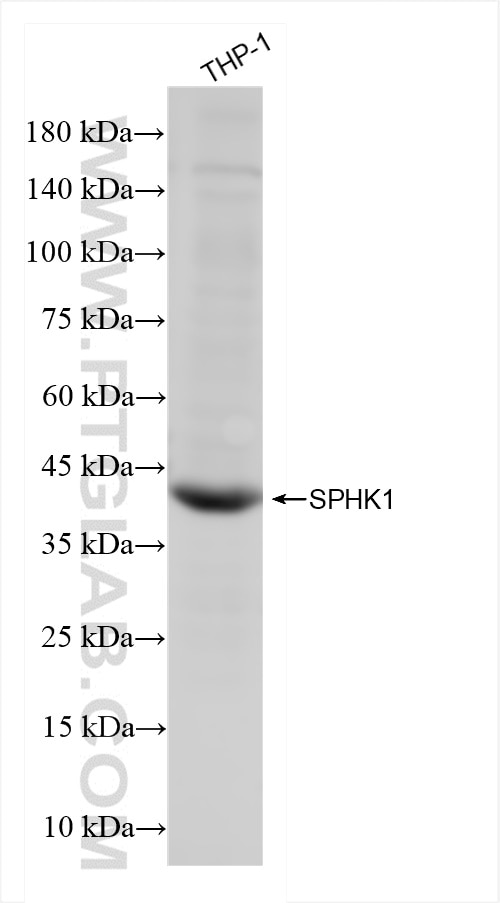SPHK1 Rekombinanter Antikörper
SPHK1 Rekombinant Antikörper für WB, ELISA
Wirt / Isotyp
Kaninchen / IgG
Getestete Reaktivität
human
Anwendung
WB, ELISA
Konjugation
Unkonjugiert
CloneNo.
241017A6
Kat-Nr. : 84640-1-RR
Synonyme
Geprüfte Anwendungen
| Erfolgreiche Detektion in WB | THP-1-Zellen |
Empfohlene Verdünnung
| Anwendung | Verdünnung |
|---|---|
| Western Blot (WB) | WB : 1:500-1:2000 |
| It is recommended that this reagent should be titrated in each testing system to obtain optimal results. | |
| Sample-dependent, check data in validation data gallery | |
Produktinformation
84640-1-RR bindet in WB, ELISA SPHK1 und zeigt Reaktivität mit human
| Getestete Reaktivität | human |
| Wirt / Isotyp | Kaninchen / IgG |
| Klonalität | Rekombinant |
| Typ | Antikörper |
| Immunogen | Peptid |
| Vollständiger Name | sphingosine kinase 1 |
| Berechnetes Molekulargewicht | 51 kDa |
| Beobachtetes Molekulargewicht | 42 kDa |
| GenBank-Zugangsnummer | NM_182965 |
| Gene symbol | SPHK1 |
| Gene ID (NCBI) | 8877 |
| Konjugation | Unkonjugiert |
| Form | Liquid |
| Reinigungsmethode | Protein A purfication |
| Lagerungspuffer | PBS with 0.02% sodium azide and 50% glycerol |
| Lagerungsbedingungen | Bei -20°C lagern. Nach dem Versand ein Jahr lang stabil Aliquotieren ist bei -20oC Lagerung nicht notwendig. 20ul Größen enthalten 0,1% BSA. |
Hintergrundinformationen
SPHK(Sphingosine kinase 1) is also named as SPHK, SPK.It catalyzes the phosphorylation of sphingosine to form sphingosine 1-phosphate (SPP), a lipid mediator with both intra- and extracellular functions and is precariously perched at the balance point between progrowth and pro-death signalling in the cell.Endogenous SPHK1 purified from placenta has identical enzymatic characteristics, suggesting posttranslational modification does not effect functional properties(PMID:10947957).It has 2 isoforms produced by alternative splicing and can form the oligomeric structure(PMID:22335554).
Protokolle
| PRODUKTSPEZIFISCHE PROTOKOLLE | |
|---|---|
| WB protocol for SPHK1 antibody 84640-1-RR | Protokoll herunterladen |
| STANDARD-PROTOKOLLE | |
|---|---|
| Klicken Sie hier, um unsere Standardprotokolle anzuzeigen |


